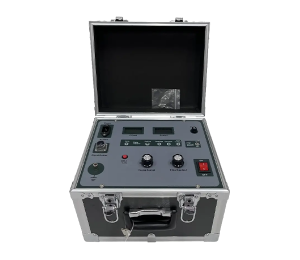 English
English


dc hipot test voltage
Understanding DC Hipot Test Voltage and Its Importance in Electrical Equipment Testing
The Direct Current (DC) dielectric withstand test, commonly referred to as the DC hipot test, is an essential procedure in evaluating the insulation integrity of electrical equipment. This test is critical for ensuring the reliability and safety of various electrical components, such as transformers, motors, cables, and circuit breakers. The primary goal of the DC hipot test is to subject electrical components to a high voltage to confirm that their insulation systems can withstand extreme conditions without breaking down.
The DC hipot test applies a specified DC voltage to the electrical insulation of a device. This voltage is significantly higher than the operational voltage that the equipment would typically experience in service. By establishing this elevated voltage, engineers can assess the insulation material’s ability to prevent electrical current from passing through unintended paths. The test is particularly vital for equipment operating at high voltages, where the risk of dielectric breakdown is ever-present.
How the DC Hipot Test Works
During the test, a DC voltage source is connected to the equipment under test (EUT). The source gradually increases the voltage to the predetermined test level, which is often several times higher than the rated operating voltage of the equipment. The test is conducted for a specified duration, usually ranging from 1 to 5 minutes. Throughout this period, the current flowing through the insulation is monitored.
A key measure in the DC hipot test is the leakage current, which is the small amount of current that flows through the insulation during the procedure. Ideally, a good dielectric material will show very low leakage current. If the measured leakage current exceeds a certain threshold, it may indicate that the insulation is compromised and that there is a potential risk of failure. Any arcing or breakdown observed during the test is a significant signal that the insulation is inadequate or has degraded, necessitating further investigation or replacement.
Advantages of DC Hipot Testing
dc hipot test voltage

One of the critical advantages of DC hipot testing is that it allows for a more controlled environment when assessing insulation performance. Unlike AC testing, where the waveform can impact the test results, DC testing provides consistent and stable voltage application which can yield more repeatable results.
Moreover, the DC hipot test is effective in simulating real-world conditions that the insulation might encounter over its lifespan. By identifying insulation failures during the manufacturing process or before installation, potential issues can be addressed proactively, thus preventing costly downtimes and safety hazards in the future.
Applications of DC Hipot Testing
DC hipot testing is widely applicable across various industries, including power generation, manufacturing, telecommunications, and more. It is commonly utilized in quality assurance processes to confirm that insulation materials meet established safety standards. Furthermore, routine testing in maintenance programs helps in predictive maintenance, allowing operators to identify and mitigate risks before they evolve into more significant problems.
Conclusion
In conclusion, the DC hipot test is a critical procedure for verifying the integrity of electrical insulation in various components. By applying a higher-than-normal DC voltage to equipment, engineers can identify insulation weaknesses that might lead to failures in the field. The insights gleaned from DC hipot testing not only enhance device safety and reliability but also contribute to the longevity of electrical systems, making it an indispensable tool in electrical engineering and maintenance practices.
-
Differences between open cup flash point tester and closed cup flash point testerNewsOct.31,2024
-
The Reliable Load Tap ChangerNewsOct.23,2024
-
The Essential Guide to Hipot TestersNewsOct.23,2024
-
The Digital Insulation TesterNewsOct.23,2024
-
The Best Earth Loop Impedance Tester for SaleNewsOct.23,2024
-
Tan Delta Tester--The Essential Tool for Electrical Insulation TestingNewsOct.23,2024





